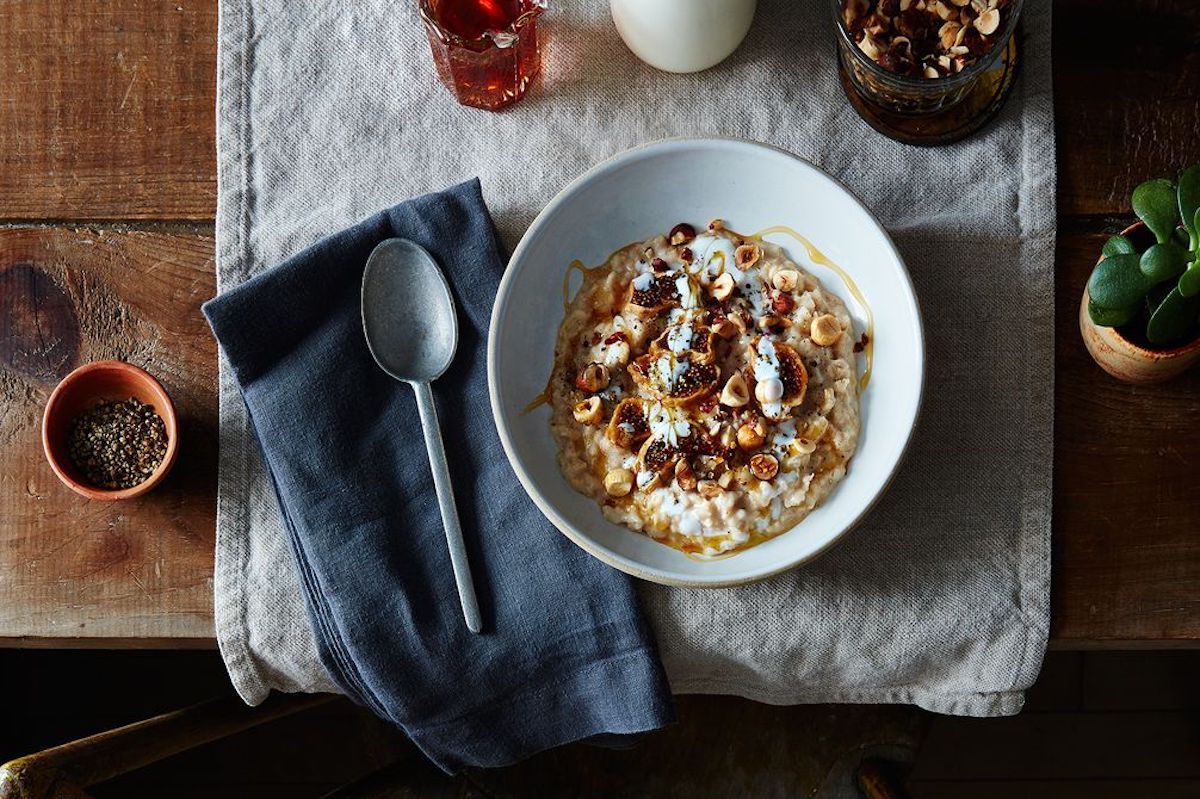Ready to learn how to make oatmeal once and for all? Before you get cooking, there's a lot to know about this simple pantry staple. There's a world of cooking variations to familiarize yourself with depending on how the raw grain was milled, which makes a difference in the preparation of your perfect bowl.
Like most grains, oats are best enjoyed in either a crunchy or a softened state. Dehydrated, toasted oats become granola. Oatmeal, on the other hand, is defined by the fullness of its hydration. In terms of cookery, oatmeal just might be the world's most forgiving dish. The recipe can be reduced to a simple equation. Oats + liquid + time = oatmeal. You can mess it up, but it's not easy, especially if you understand the ratio of oats to liquid. Oats can absorb a lot of water, so you need substantially less oats than water by volume: 1/2 cup of oats is a reasonable place to start for a single portion.
Let's explore three popular kinds of oatmeal — rolled oats, steel-cut oats, and instant oatmeal — and go over how to cook each one.
Rolled Oats
Rolled oats, also called flaked or old-fashioned oats, are quite literally rolled. Actually, they're steamrolled. Picture one of the machines road crews use to level asphalt, except there are two of them (one on top of the other) with steamed oat groats in between. When the rollers turn, the grain is flattened — almost like rolling dough through a pasta machine. Because the grains have been steamed and smashed, they're already par-cooked. Rolled oats can get you to a bowl of oatmeal in 10 minutes or less, with a soft, gooey texture that retains a slight chew. They're also ideal for baked oatmeal and oatmeal muffins.
Cook on the stove (boil then simmer for about 10 minutes, stirring occasionally) or in the microwave (uncovered on high for about 2 minutes, stirring halfway through) with a 1:2 oatmeal to liquid ratio. Use water or milk for sweet oatmeal, and water, milk, or stock for savory. If you find the consistency too thin, keep simmering and the oatmeal will thicken.
Steel-Cut Oats
Steel-cut oats, also known as Irish oatmeal, are chopped rather than rolled. To give it some context: If oats were vegetables, steel-cut oats would be large dice. Millers use steel blades to break the groats into three or four pieces each. Because steel-cut oats haven't been steamed and smashed, and because they're thicker, they take longer to cook than rolled oats, and have a chewier texture.
Stove-top is the recommended method for steel-cut oats. Bring a 1:3 (or even 1:4) ratio of oatmeal to liquid to a boil in a pot, reduce to a simmer, and cook for 20 to 25 minutes, stirring every few minutes to prevent the oats from sticking to the bottom of the pot. Irish oatmeal can take up to 30 minutes to cook, depending on the heat level. If undercooked, the grains will be excessively al dente. This is easily corrected (provided you aren't already late for work). Just let them ride a little longer, adding water as necessary if the consistency becomes too thick before the oats are fully cooked.
If you burn your oatmeal, you'll unfortunately have to start over. Even if you try to separate the burned portion, the acrid flavor will have already infused the rest of the pot.
Instant Oats
Instant oats are rolled oats that are thinner and broken into smaller pieces, and they cook the fastest of all three styles. You can more or less just add boiling water to instant oats or microwave them in a 1:2 ratio of oats to water for a minute, and have yourself a bowl of oatmeal right then and there. Instant oats also produce oatmeal with the smoothest, most homogeneous texture, which may or may not be a textural drawback depending on your inclinations.
Overnight Oats
Oats are so absorbent that heat isn't even necessary to make oatmeal; it simply helps oats absorb liquid more quickly (and it warms your belly on a cold morning). You're probably hip to overnight oats, which utilize time to the fullest to produce creamy oatmeal without the aid of your stove or microwave.
Oatmeal Toppings
Now, let's talk flavor. The fun of oatmeal is that it's a blank canvas, eager to accept the endless flow of your creative ideas. Before you get too fancy, though, don't forget the salt. A little pinch of salt goes a long way toward bringing out the natural flavor of the grain. If you skip the salt, you're shortchanging your oats.
Oatmeal tastes great with just about anything. Standard breakfast flavor profiles are built from fruit, nuts, and seeds; dairy products like milk, butter, and yogurt; sweeteners like honey, maple syrup, and brown sugar; and spices like cinnamon or nutmeg. You can also get more adventurous with ingredients like chocolate, coconut milk, avocado, nut butters, pumpkin, cardamom, or star anise. You can even make savory oatmeal with ingredients like chicken broth, cheese, a fried or poached egg, sausage, chives, shallot, mushrooms, saffron, or turmeric.
Personally, I'm currently on a chocolate overnight oats kick, and banana bread oatmeal is one of my favorite ways to use overripe bananas. In the end, the best approach to oatmeal is to always keep oats stocked in the pantry, along with a few ingredients from the list above. That way, when your belly rumbles on a chilly morning, you'll be prepared to deliver the perfect bowl of oatmeal.
Related reading:


Shares